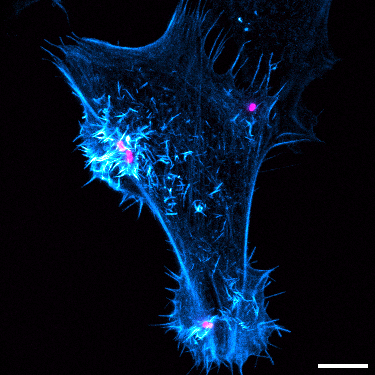This research focuses on the intracellular lifestyle of Salmonella during host cell invasion, highlighting differences between non‑typhoidal (NTS) and typhoidal (TS) serovars. While NTS typically cause self‑limiting infections, TS can lead to severe systemic disease in humans.

During infection, Salmonella uses a specialized secretion system to inject effector proteins into host cells, enabling bacterial uptake into small compartments called Salmonella‑containing vacuoles (SCVs). After invasion, most pathogenic bacteria, including Salmonella Typhimurium, suppress flagella production to avoid immune detection. However, the human‑restricted TS Salmonella Paratyphi A (SPA) uniquely continues flagella synthesis and utilizes these structures for motility within the host cell cytosol.

As part of the DFG Priority Programme "SPP 2225: Exit Strategies of Intracellular Pathogens", we investigate whether SPA’s motility aids in escaping SCVs or even entire host cells. By employing cutting‑edge microscopy and single‑cell analysis, we aim to deepen our understanding of typhoid infections and uncover potential therapeutic targets.
